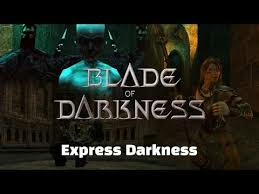
The gameplay showcase revealed a 5-minute clip featuring:
- The protagonist, Aran de Lira, explores woodland areas
- Combat against goblin-like creatures and the undead
- An interesting weapon-breaking mechanic
- A simple environmental puzzle involving a “Cursed Paladin of Aurora”
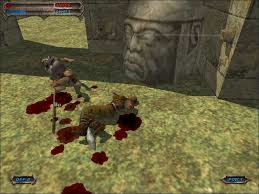
While the author acknowledges that the combat looks “weighty and purposeful” and appreciates elements like the weapon-breaking mechanic and forge transportation node, he’s concerned that Blades of Fire is borrowing too heavily from God of War (2018) in terms of:
- Combat mechanics
- Aesthetic and color palette
- Pacing and environment design
- Specific elements like the round stone door resembling those in Midgard
As someone who remembers the original Severance: Blade of Darkness (which MercurySteam confirmed is the spiritual predecessor), Lane was hoping to see more of that game’s darker, eerier Conan-inspired tone rather than what appears to be a God of War clone.
That said, he acknowledges this is just a tiny sample and hopes the full game will establish its own identity before its May 22 release date.
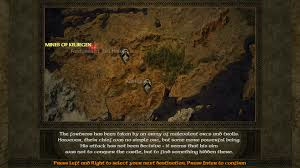
Is there anything specific about this upcoming game that interests you? The weapon forging mechanics that were mentioned could be an interesting distinguishing feature.
Severance: Blade of Darkness – Retrospective Review
Overview
Released in 2001 by Spanish developer Rebel Act Studios (predecessor to MercurySteam), Severance: Blade of Darkness (also known simply as Blade of Darkness in North America) was a pioneering third-person action game that arrived before the term “Soulslike” existed yet embodied many qualities that would later define the genre. The game combined brutal combat, dark fantasy aesthetics, and challenging gameplay in ways that were revolutionary for its time.
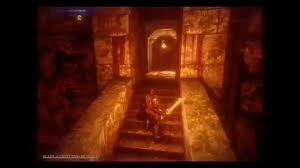
Technical Aspects & Visuals
For a 2001 release, Blade of Darkness was visually impressive. The game featured:
- Advanced lighting effects with real-time shadows
- Detailed environments with impressive draw distances
- Physics-based interactions (rare for its era)
- Dynamic blood effects and dismemberment systems
- Varied environments ranging from ancient temples to medieval castles
While naturally dated by today’s standards, the game’s moody lighting and atmospheric environments created an immersive experience that helped establish its grim tone. The engine allowed for destructible elements and environmental interaction that felt ahead of its time.
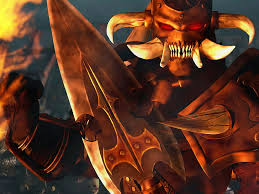
Gameplay & Combat
Character Selection
Unlike many action games of its era, Blade of Darkness offered four distinct playable characters:
- Tukaram – A barbarian with high strength and powerful but slow attacks
- Naglfar – A dwarf specializing in axes with balanced stats
- Sargon – A knight who excels with swords and has good all-around capabilities
- Zoe – An amazon focused on speed and agility with lighter weapons
Each character had unique starting locations, weapon proficiencies, and combat animations, providing significantly different gameplay experiences.
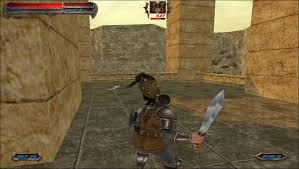
Combat System
The combat was the game’s centerpiece and remarkably innovative for its time:
- Limb-specific damage and a gruesome dismemberment system
- Combo-based fighting with directional attacks (up, down, left, right)
- Weapon mastery system where characters became more proficient with specific weapon types through use
- Diverse weapon selection with unique movesets and special attacks
- Physics-based weapon interactions where weapons could get stuck in walls or bodies
- Stamina management requiring tactical approach to combat
The combat felt weighty and consequential, with positioning and timing crucial—enemies could kill the player in just a few hits, encouraging careful engagement.
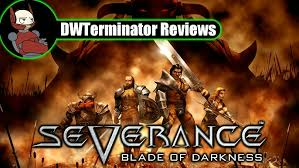
Level Design & Progression
The game featured a semi-open level structure with:
- Interconnected levels with shortcuts
- Environmental puzzles that required exploration
- Hidden areas containing powerful weapons and items
- Checkpoint-based saving system that increased tension
The level design emphasized exploration and rewarded curiosity, though the limited save system could be frustrating by modern standards.
Story & Setting
Set in a dark fantasy world inspired by Robert E. Howard’s Conan and similar sword-and-sorcery fiction, the narrative involved:
- An ancient evil is awakening after being defeated by a hero wielding the Blade of Darkness
- Four heroes (the playable characters) seeking to recover the fragments of the blade
- A minimalist storytelling approach relying heavily on atmosphere over exposition
The story was primarily conveyed through brief cutscenes and scattered scrolls found throughout the game, creating a mysterious atmosphere without overwhelming players with narrative.
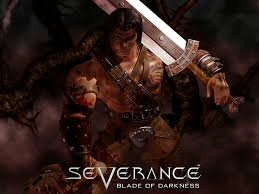
Sound Design & Music
The audio experience was characterized by:
- Minimal but effective musical scoring that emphasized ambient tension
- Impactful combat sounds that reinforce the visceral nature of fighting
- Environmental audio cues that enhanced the atmospheric quality
Difficulty & Accessibility
Blade of Darkness was notorious for its difficulty:
- Unforgiving combat where even basic enemies could kill the player quickly
- Limited health regeneration options
- Checkpoint-based save system rather than save-anywhere functionality
- Challenging environmental puzzles and platforming sections
These elements made the game polarizing—beloved by those who appreciated its challenge but frustrating for others.
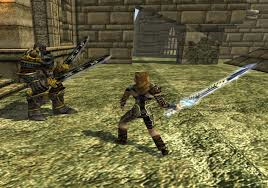
Legacy & Influence
While not as widely recognized as contemporaries like Diablo II or later influential titles like Dark Souls, Blade of Darkness pioneered several elements that would become staples of action RPGs:
- Precise, tactical combat requiring timing and stamina management
- Dark fantasy setting with minimal but atmospheric storytelling
- Challenging gameplay that rewarded mastery and punished mistakes
- Physics-based interactions in combat
Many consider it a spiritual predecessor to the Soulslike genre, implementing similar philosophies years before Demon’s Souls.

Conclusion
Severance: Blade of Darkness remains a fascinating artifact of gaming history—a title that was perhaps ahead of its time. Its combination of punishing difficulty, precise combat mechanics, atmospheric worldbuilding, and physics-based interactions established a template that many modern action RPGs still draw from. While its rough edges are apparent today, its core combat and atmosphere remain impressive more than two decades after its release.
The game received renewed attention when Nordic Games (now THQ Nordic) re-released it on digital platforms in 2021, allowing a new generation to experience this cult classic. For those interested in the evolution of action RPGs and the roots of the Souls-like genre, Blade of Darkness represents an essential, if sometimes overlooked, chapter in gaming history.
Dragon Age: The Veilguard – A Review
Introduction
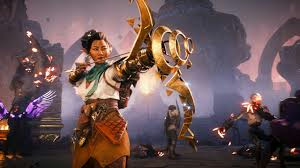
Dragon Age: The Veilguard marks BioWare’s return to the beloved fantasy RPG series after nearly a decade since Dragon Age: Inquisition. Released in late 2024, this fourth instalment continues the epic saga of Thedas while introducing significant changes to the franchise formula. As a longtime follower of the series tasked with preventing the impending destruction of the world, The Veilguard attempts to balance nostalgia with innovation—succeeding in some areas while stumbling in others.
Story & Setting
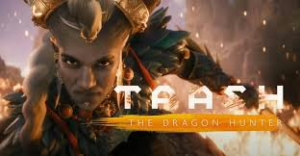
The Veilguard picks up several years after the events of the Inquisition, with the mysterious Solas (the Dread Wolf) working to tear down the Veil, separating the material world from the Fade. You play as Rook, a fully-voiced protagonist with a customizable background but a fixed destiny as the leader of the Veilguard—a specialized team assembled to stop Solas’s plans.
The narrative strengths lie in its complex themes of legacy, identity, and the costs of radical change. BioWare excels at creating morally ambiguous scenarios where players must choose between complicated options with far-reaching consequences. The game successfully weaves together loose threads from previous titles while establishing its own identity.
However, the pacing suffers from uneven chapter distribution. The middle acts feel rushed compared to the meticulously crafted opening and finale. Some major plot points resolve too quickly, leaving certain character arcs feeling incomplete despite their promising setups.
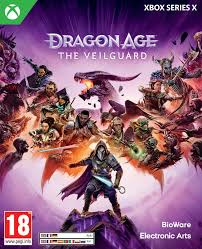
Characters & Companions
The companions represent the Veilguard’s greatest triumph. Each of the seven recruitable allies brings unique perspectives, engaging personalities, and compelling personal quests:
- Neve, the pragmatic Tevinter mage with hidden depths
- Lucanis, the charming elven assassin with ties to the Antivan Crows
- Bellara, the haunted dwarven engineer with a troubled past
- Trash, the philosophical Qunari dragon hunter
- Emmrich, the scholarly Grey Warden with questionable methods
- Davrin, the idealistic human knight with a crisis of faith
- Harding, the returning scout from Inquisition who finally joins as a complete companion
The relationship system has been refined, allowing for deeper connections—platonic, romantic, or antagonistic—that evolve naturally through gameplay rather than simple approval meters. The banter between companions during exploration provides some of the game’s most memorable moments, revealing hidden facets of their personalities.
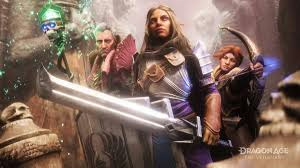
Gameplay & Combat
The Veilguard represents BioWare’s most significant departure from traditional Dragon Age gameplay. The previous entries’ tactical pause-and-play system has been replaced with a more action-oriented approach focused on real-time combat with advanced mobility options. Players can switch between companions on the fly, combining abilities for powerful combo effects.
The four class specializations (Warrior, Rogue, Mage, and the new Veilwalker hybrid) offer distinct playstyles with deep skill trees that encourage experimentation. The crafting system allows for impressive weapon and armour customization, though gathering materials can become repetitive.
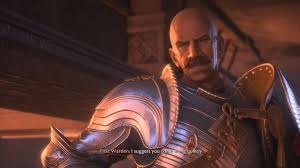
Combat encounters shine in carefully designed set pieces but lose their lustre in the open-world areas where enemy variety becomes predictable. Boss fights, however, are consistently challenging and memorable, requiring strategic thinking rather than simple damage races.
World Design & Exploration
The game spans five major regions of Thedas, each with distinct visual identities:
- The lush, haunted forests of the Arlathan Wilds
- The decadent, magical corridors of Minrathous in Tevinter
- The mysterious underwater ruins of the Sunken Keep
- The war-torn landscapes of the Anderfels
- The otherworldly, shifting architecture of the Crossroads
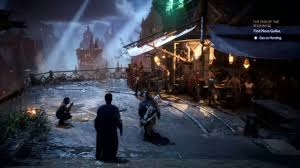
The semi-open world design strikes a better balance than the Inquisition’s sprawling maps, offering focused areas with meaningful content rather than endless collectables. Side quests generally connect to the main narrative or provide valuable character development. The vertical exploration enabled by the new climbing mechanics adds a refreshing dimension to world traversal.
Technical Performance & Visuals
On high-end PCs, The Veilguard is stunning, with impressive lighting effects and detailed character models. However, performance issues plagued the console releases at launch, with frequent frame drops and texture-loading problems on both PS5 and Xbox Series X|S. Several patches have improved stability, but some technical issues persist.
The art direction deserves special praise for its imaginative interpretation of established Dragon Age aesthetics while pushing boundaries in areas like the Fade sequences, which feature surreal, dreamlike environments that shift according to emotional states.
Sound Design & Music
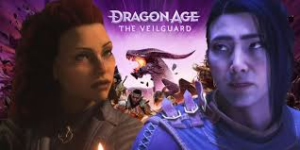
Inon Zur returns as a composer, delivering a soundtrack that skillfully balances familiar Dragon Age themes with new motifs for emerging characters and factions. The voice acting is generally excellent, with standout performances from the companions and the protagonist’s voice actors.
Final Verdict
Dragon Age: The Veilguard is an ambitious game that doesn’t quite reach all its lofty goals, but provides an engrossing experience nonetheless. Its strengths lie in character development, narrative choices with meaningful consequences, and a visually captivating world. Its weaknesses include technical inconsistencies, pacing issues in the middle acts, and combat that occasionally prioritizes spectacle over strategy.
For series veterans, The Veilguard represents a significant evolution that might require adjustment. Still, the core elements that made Dragon Age special—complex characters, difficult moral choices, and a richly detailed world—remain intact. For newcomers, it offers an accessible entry point with enough context to understand the stakes without feeling overwhelmed by lore.
Score: 8/10 – Despite its flaws, Dragon Age: The Veilguard successfully revitalizes the franchise with bold new directions while honoring what came before, leaving fans eager to see where BioWare will take the series next.
Secure browsing

When it comes to staying safe online, using a secure and private browser is crucial. Such a browser can help protect your personal information and keep you safe from cyber threats. One option that offers these features is the Maxthon Browser, which is available for free. It comes with built-in Adblock and anti-tracking software to enhance your browsing privacy.
By utilising Maxthon Browser, users can browse the internet confidently, knowing that their online activities are shielded from prying eyes. The integrated security features alleviate concerns about potential privacy breaches and ensure a safer browsing environment. Furthermore, the browser’s user-friendly interface makes it easy for individuals to customise their privacy settings according to their preferences.
Maxthon Browser not only delivers a seamless browsing experience but also prioritises the privacy and security of its users through its efficient ad-blocking and anti-tracking capabilities. With these protective measures in place, users can enjoy the internet while feeling reassured about their online privacy.
In addition, the desktop version of Maxthon Browser works seamlessly with their VPN, providing an extra layer of security. By using this browser, you can minimise the risk of encountering online threats and enjoy a safer internet experience. With its combination of security features, Maxthon Browser aims to provide users with peace of mind while they browse.
Maxthon Browser is a reliable choice for users who prioritise privacy and security. With its robust encryption measures and extensive privacy settings, it offers a secure browsing experience that gives users peace of mind. The browser’s commitment to protecting user data and preventing unauthorised access sets it apart in the competitive web browser market.
